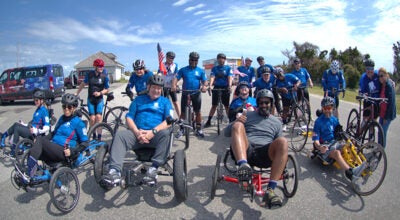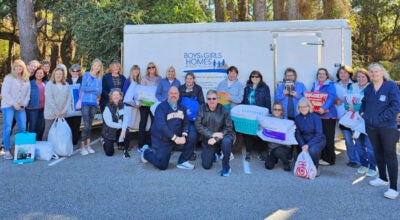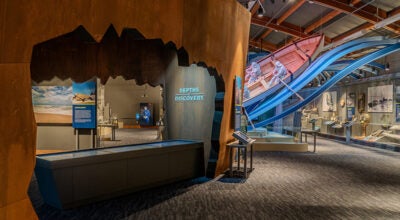VIRTUAL TOUR: Richard Etheridge and The Pea Island Lifesaving Station
Published 10:47 am Wednesday, July 1, 2020
|
Getting your Trinity Audio player ready...
|
Courtesy Pea Island Preservation Society
The Pea Island Cookhouse Museum is located in the town of Manteo on Roanoke Island. Commonly called the Cookhouse Museum, the museum is housed in the original cookhouse building that was part of the Pea Island Lifesaving Station.
In 2006, the cookhouse was moved to Sir Walter Raleigh Street at Collins Park, a small park a few blocks opposite downtown Manteo. The Cookhouse Museum underwent renovations in 2008 before it was opened to commemorate and remember the dedication and service that the black lifesavers of the Pea Island Lifesaving Station contributed to the history of America.
In 1880, Richard Etheridge was named the Keeper of the Station. He was a former slave born on Roanoke Island who was taught to read and write. He had also served with Colored Troops during the Civil War.
Under Etheridge’s leadership, the crew of the Pea Island Lifesaving Station performed hundreds of rescues in some of the most treacherous of seas along the coastal United States, an area referred to as the “Graveyard of the Atlantic” for the many ships that sank there.
The station is most known for the October 11, 1896, rescue of the entire nine-member crew of the three-masted schooner known as the E.S. Newman. The vessel was caught in a horrible storm and was blown 100 miles south off course. It came ashore two miles south of the Pea Island station.
One hundred years after the incident, Richard Etheridge and his crew were posthumously awarded the Gold Lifesaving Medal for this rescue. A rescue that has been documented as one of the most heroic rescues in U.S. Coast Guard history.
Following the death of Richard Etheridge in 1900, the Pea Island station was continually manned by African American Keepers and crew members until the station was decommissioned in 1947.
Besides the legacy of Richard Etheridge and his crew, the museum also honors the service of other blacks who followed in their footsteps and served at the station until it closed. These additional men, including Keepers Benjamin Bowser, Lewis Wescott, William Irving, George Pruden, Maxie Berry, Sr., and Surfman Herbert Collins, the last Surfman to remain at the station before it closed, helped Pea Island to continually earn the reputation as one of the best stations along the coastal Outer Banks for the duration of its existence.
The original signboard of the E.S. Newman, the ship rescued by Etheridge and his crew in 1896, is displayed at the museum along with a Lyle gun used by the crew. The museum also contains memorabilia, artifacts, relics, photographs and other records and information about the Pea Island Lifesaving Station and the African Americans who served there.
Along the street in the center of a roundabout adjacent to the Cookhouse Museum, a life-sized bronze statue of Richard Etheridge is on display. The statue represents Richard Etheridge standing with courage and conviction and holding a long oar of a rescue boat in his right hand.
In addition, the most recent added attraction to the Cookhouse Museum is the Herbert M. Collins Boathouse, located next door. The boathouse, opened and dedicated in October 2010, is to honor former Lieutenant Herbert Collins, who was born on Roanoke Island in 1921 and died in 2010.
Lieutenant Collins, often referred to as the last Keeper of the Pea Island station, began his early career at the station serving there from 1940-1947. After leaving Pea Island he remained in the U.S. Coast Guard for 34 years serving at numerous sea and shore assignments. He is also a member of the Berry/Collins family, a local Roanoke Island African American family that has over 400 years of continuous service in the USLSS/USCG, one of the longest records in Coast Guard history.
The boathouse contains a Monomoy-type Surfboat, on loan to the Cookhouse Museum by the National Park Service. It represents the same type of Surfboat that would have been used by Lieutenant Collins and the many other African American men who bravely and honorably served at the Pea Island Lifesaving Station for over sixty years.
READ ABOUT COMMUNITY NEWS HERE.
ALSO OF INTEREST:
VIRTUAL TOUR – Island Farm: Going back in time to coastal farm life in the 1800s





